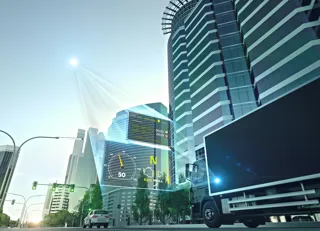By Gary Brooks, CMO at Syncron
The “autonomous fleet” has been arguably one of the hottest topics of conversation within trucking and freight circles over the last few years.
In the UK, the first connected and self-driving commercial freight fleets are predicted to appear on UK highways by 2025, according to government and industry collaborative enterprise Zenzic. In the USA, Daimler has been testing autonomous Freightliner trucks and UPS recently announced that it has been delivering shipments via autonomous trucks for months – with no one seemingly noticing.
With additional ongoing investments in autonomous technology by the likes of Waymo and others, the dawn of the autonomous fleet is upon us at last.
Looking at the more precocious US freight market, 65 per cent of consumable goods in the U.S. are trucked to market, and with full autonomy anticipated by 2027, operating costs would decline by about 45 per cent – ultimately saving the U.S. for-hire trucking industry up to $125 billion (McKinsey).
The shift to full autonomy represents a big change for the entire industry, but also creates a significant opportunity to implement new efficiencies that improve both financial performance and the customer experience.
Below are three key areas that should be top of mind for all freight stakeholders as more autonomous trucks come on to the road:
The changing role of drivers
As truck drivers retire, there are not many replacements standing in line to take over. There is currently a need for nearly 50,000 new drivers – a deficit that could increase to 240,000 by 2022.
Autonomous trucks will make up some of this gap, as the driver’s role will change drastically as trucks become more and more technologically advanced.
With technology taking the wheel, the role of drivers is soon set to evolve from “operator” to “supervisor,” or even “technician.”
Granted, many drivers do know the mechanical basics to cope with malfunctions on the road until they get to the next hub.
But with the rise of autonomous technology, drivers will need to receive updated technical training so that they can address any mishaps that the technology may encounter.
Fleet owners and OEMs should begin their preparations for delivering their respective training materials now so that they can seamlessly help drivers to transition into this next age.
Evolving service and maintenance models
In today’s traditional, break-fix service model, where equipment is repaired after it has already failed, the responsibility of maintenance lies with the end user.
As the trucking industry evolves to be more fully autonomous, however, truck manufacturers will begin to absorb the responsibility, cost and risk maintenance entails.
Given autonomous vehicles will not be subject to the same breaks that human operated vehicles are -- for example sleep breaks -- the speed of deliveries is likely to increase.
Meaning customer expectations are going to rise as well.
Therefore, ensuring that vehicles are always up-and-running will be incredibly important. To do so, OEMs and fleet managers need to look at solutions that can help them proactively diagnose potential equipment trouble and then make repairs before a part fails.
This will help freight providers prevent any unplanned service disruptions as much as possible and keep customers happy and loyal.
Rethinking Distribution
Today, between 12 and 15 percent of all purchases in the United States are made from the comfort of home.
Amazon’s same-day delivery service is only a couple of years old, but already, up to 5 percent of all its deliveries are same day.
By 2025, that figure might be as high as 15 percent, cementing customers’ expectations for fast and free delivery (McKinsey).
This ever-increasing demand for fast, reliable deliveries will drive the advancement of autonomous technology and require fleet managers to rethink current distribution models.
With rising fuel efficiency and fewer driver breaks thanks to autonomous technology, are the current distribution centers and hubs still in the best locations possible?
Moreover, given the increased focus on maximised equipment uptime and preemptive maintenance, are hubs in the most strategic location to make repairs and receive needed parts?
These are just a few considerations that OEMs and fleet managers need to have in mind during this period of evolution in freight.
Autonomous vehicles are definitely an intriguing proposition.
But it is important for OEMs and fleet owners to not get caught up in the novelty of these vehicles while forsaking the necessary strategies to make the most of the potential of these vehicles.
By focusing on these three areas first, freight stakeholders will be able to build a foundation that will enable their success for years to come.




















Login to comment
Comments
No comments have been made yet.